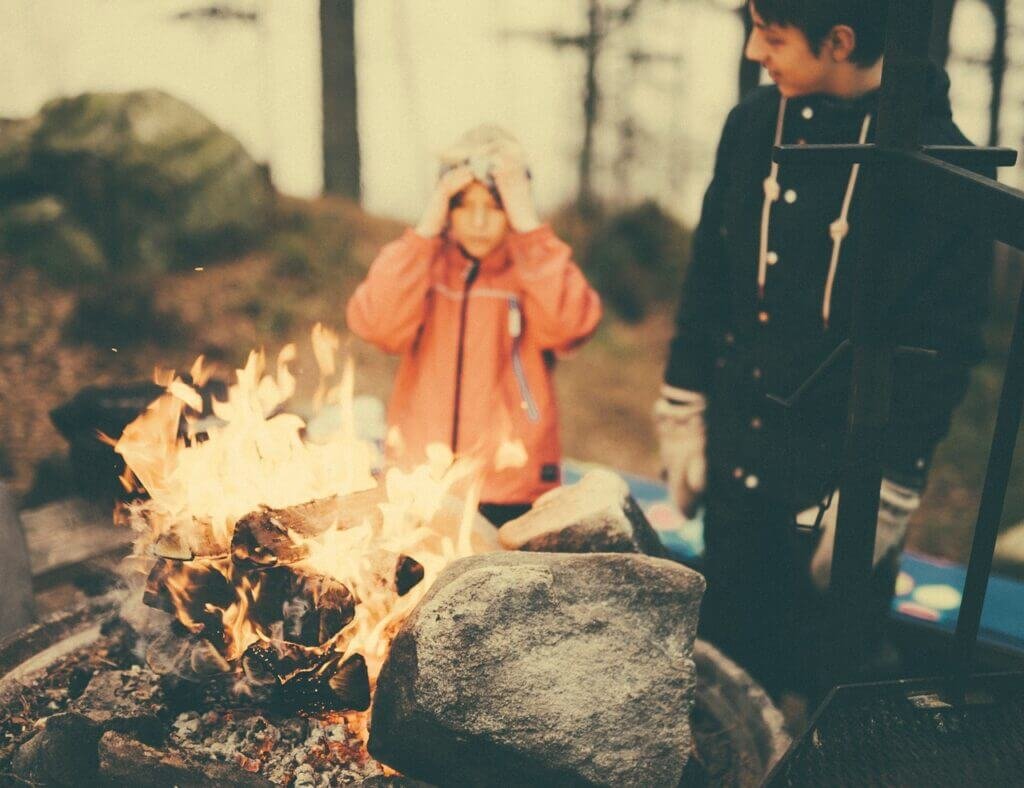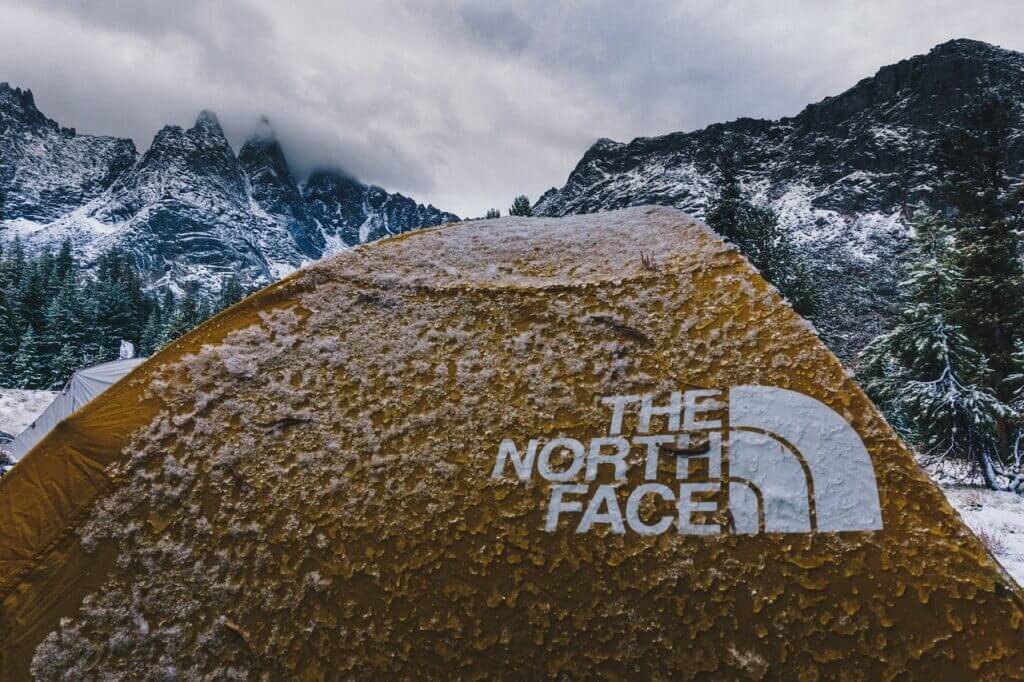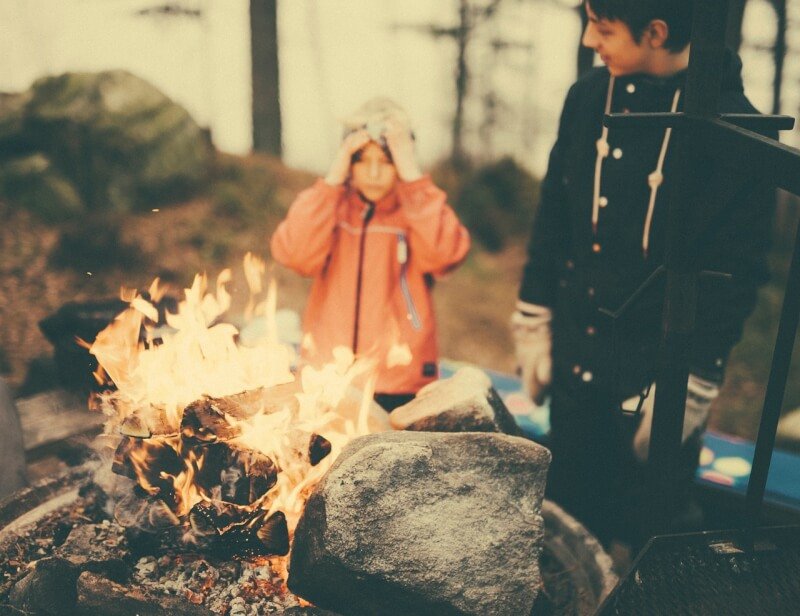When it comes to camping in cold weather, staying warm and comfortable is essential for an enjoyable experience. Whether you’re an avid camper or a newbie, the biting cold can pose a challenge. However, fear not! In this article, we’ll share some helpful tips and tricks to help you stay cozy and snug during your winter adventures in the great outdoors. From choosing the right gear to mastering the art of layering, we’ve got you covered! So, grab a cup of hot cocoa and let’s dive into the world of camping in cold weather.

Choosing the Right Camping Gear
Selecting a Suitable Tent
When camping in cold weather, it is essential to choose a tent that is specifically designed for cold conditions. Look for a tent with sturdy construction and good insulation to keep you warm. A four-season or a winter tent is recommended, as it is designed to withstand harsh weather conditions and provide better insulation.
Using a Quality Sleeping Bag
Investing in a high-quality sleeping bag is crucial for staying warm and comfortable during cold weather camping trips. Look for a sleeping bag that is rated for low temperatures and has good insulation. Consider the shape and size of the bag to ensure it fits you well and allows for proper heat retention.
Choosing the Right Sleeping Pad
A good sleeping pad is essential for insulation and comfort while camping in the cold. Look for a pad that provides adequate insulation from the cold ground, such as an inflatable or foam pad. It should also offer cushioning and support for a good night’s sleep.
Using Insulated Water Bottles
Staying hydrated is important, even in cold weather. Using insulated water bottles will not only keep your drinks at the desired temperature but also prevent them from freezing. Make sure to keep a sufficient supply of water to stay hydrated throughout your camping trip.
Pack Extra Blankets
In addition to a quality sleeping bag, consider packing extra blankets to add an extra layer of warmth. Layering blankets on top of your sleeping bag can significantly increase insulation and help you stay cozy during cold nights.
Dressing Appropriately
Layering Your Clothing
Dressing in layers is key to staying warm during cold weather camping. Layering allows you to adjust your clothing according to your body temperature and the weather conditions. Start with a moisture-wicking base layer to keep sweat away from your skin, add an insulating mid-layer, and finish with a waterproof and windproof outer layer.
Using Insulated and Moisture-Wicking Fabrics
Choosing the right materials for your clothing is essential in cold weather camping. Insulated fabrics, such as fleece or down, provide excellent warmth. Moisture-wicking fabrics, like merino wool or synthetic materials, help to keep sweat away from your body, preventing you from feeling cold and damp.
Covering Your Head, Hands, and Feet
A significant amount of heat is lost through the head, hands, and feet. Be sure to wear a warm hat, gloves or mittens, and thick socks to keep these areas insulated. Consider bringing hand and feet warmers for additional warmth during extremely cold temperatures.
Wearing Proper Footwear
Invest in a pair of high-quality insulated boots that are designed for cold weather camping. Insulated boots provide warmth, protection, and traction on slippery surfaces. Make sure they are waterproof and have good insulation to keep your feet dry and warm throughout your camping trip.
Keeping Spare Dry Clothes
Having spare dry clothes is essential for cold weather camping. If you get wet or your clothes become damp, changing into dry clothes will help prevent hypothermia and keep you more comfortable. Pack extra socks, underwear, and thermal layers to ensure you always have dry clothing available.
Setting Up Your Campsite
Choosing a Sheltered Location
When camping in cold weather, it is important to choose a sheltered location for your campsite. Look for areas protected from strong winds, such as behind trees or natural barriers. Avoid setting up camp in low-lying areas where cold air tends to settle.
Clearing Snow and Ground Preparation
Before setting up your tent, clear away any snow or debris from the ground. This will provide a flat surface for your tent and help to insulate against the cold ground. Using a ground tarp or footprint underneath your tent can also help prevent moisture from seeping in.
Using Ground Insulation
To further insulate your tent, consider using ground insulation. This can be in the form of foam pads or insulated mats placed underneath your sleeping area. Ground insulation helps to prevent the cold from seeping into your tent and provides an extra layer of warmth.
Creating Wind Barriers
Setting up wind barriers around your campsite can help protect you from chilly winds. Use natural features like trees or bushes to create windbreaks. Additionally, you can set up a tarp or a camping screen to block the wind and create a more comfortable camping environment.

Maximizing Heat Retention
Using Portable Heaters
If permitted and used safely, portable heaters can be a great way to maximize heat retention in your camping area. Look for heaters specifically designed for outdoor use and ensure they have safety features, such as automatic shut-off and carbon monoxide detectors, to prevent accidents.
Building a Campfire
A traditional and reliable method to stay warm while camping is building a campfire. Gather firewood and kindling before starting the fire, and ensure you follow any fire regulations in the area. A well-built campfire can provide both warmth and a cozy atmosphere during cold evenings.
Utilizing Heat Reflective Materials
Using heat reflective materials inside your tent can help maximize heat retention. Reflective blankets or emergency blankets can be placed underneath your sleeping pad and on the tent walls to reflect heat back towards you. This can significantly increase the overall temperature inside your tent.
Insulating Your Tent
To further insulate your tent, consider adding a tent insulation kit or insulating the tent with additional layers. This can include using insulating liners, thermal blankets, or even hanging extra layers of insulating fabric inside your tent walls. These methods help to trap heat and keep the interior warmer.
Heating Up Rocks or Water Bottles
Another way to provide additional heat inside your tent is by heating up rocks or water bottles. Place heated rocks wrapped in cloth or warm water bottles in your sleeping bag before going to bed. The heat emitted will create a cozy sleeping environment and help you stay warm throughout the night.
Eating and Drinking for Warmth
Consuming High-Calorie Foods
Eating high-calorie foods is crucial for generating and maintaining body heat in cold weather. Foods such as nuts, energy bars, cheese, and chocolate provide the necessary energy to keep your body warm. Pack a variety of calorie-dense foods to fuel your body during your camping trip.
Preparing Warm Meals and Beverages
Cooking warm meals and beverages not only provides comfort but also helps to raise your body temperature. Prepare hot soups, stews, and warm drinks like tea or hot chocolate to keep you warm from the inside out. Use a camping stove or portable cookware to safely prepare your meals.
Avoiding Alcohol and Caffeine
While a hot cup of coffee or a sip of whiskey may initially feel warming, alcohol and caffeine can actually cause your body to lose heat. These substances increase blood flow to the skin, making you feel warmer temporarily but leading to an overall drop in body temperature. Limit your consumption of alcohol and caffeine while camping in cold weather.
Staying Hydrated
It is vital to stay hydrated even in cold weather. Dehydration can affect your body’s ability to regulate temperature and increase the risk of hypothermia. Drink plenty of water throughout the day and consider drinking warm liquids to help maintain body warmth.
Staying Active
Engaging in Physical Activities
Being physically active generates body heat, helping to keep you warm during cold weather camping. Engage in activities such as hiking, snowshoeing, or even playing outdoor games to stay active and generate body heat. However, be cautious not to overexert yourself, as sweating can lead to rapid heat loss once you stop being active.
Stretching and Exercising
Performing stretching exercises or light exercises inside your tent before bed can help increase blood flow and warm up your body. Simple movements like leg raises, arm stretches, and torso twists can improve circulation and promote warmth.
Using Hand and Toe Warmers
Hand and toe warmers are excellent tools for keeping extremities warm during cold weather camping. These small disposable pads can be activated by air and provide several hours of warmth. Place them in your gloves, boots, or even inside your sleeping bag for added comfort.
Sleeping Techniques
Preheating Sleeping Bag
Before getting into your sleeping bag, preheating it can make a significant difference in your comfort level. Place a hot water bottle or heated rocks inside your sleeping bag for a few minutes to warm it up. This preheating will create a cozy sleeping environment from the start.
Using Hot Water Bottles
Hot water bottles are excellent companions during cold weather camping. Fill a heat-resistant bottle with hot water before bed and place it at your feet or in your sleeping bag to keep you warm throughout the night. Just make sure the bottle is securely sealed to prevent any spills.
Wearing a Hat and Neck Scarf
Hats and neck scarves are simple yet effective tools for retaining body heat while sleeping. Wear a warm hat that covers your ears to prevent heat loss from your head. A neck scarf can help trap warmth around your neck and prevent drafts from entering your sleeping bag.
Sleeping with Warming Packs
Warming packs, also known as hand warmers, can be placed inside your sleeping bag to provide additional warmth. These small packs generate heat when exposed to air and can keep you warm throughout the night. Place them near your body or in strategic areas where you feel the most cold.
Proper Nighttime Routine
Emptying Your Bladder Before Bed
Emptying your bladder before bed is crucial to prevent any unnecessary trips outside in the cold during the night. Cold temperatures can make it challenging to leave the comfort of your sleeping bag, so make sure to go to the bathroom before settling in for the night.
Keeping a Water Bottle Handy
Keeping a water bottle within reach while sleeping is essential for staying hydrated throughout the night. Hydration is crucial for maintaining body temperature, especially in cold weather. Ensure your water bottle is insulated to prevent it from freezing overnight.
Avoiding Cold-Inducing Mistakes
To prevent unnecessary heat loss during the night, avoid common cold-inducing mistakes. Keep zippers on your tent and sleeping bag closed to prevent drafts. Ensure your clothing is dry and remove any wet items from your sleeping area. Properly seal your tent to prevent cold air from entering.
Using a Pee Bottle
In extreme cold weather or when leaving the tent is not desirable, using a pee bottle can be a convenient solution. Using a designated bottle for urination inside your tent can save you from venturing outside into the freezing cold. Just remember to secure the bottle tightly to prevent any spills.
Safety Measures
Knowing the Warning Signs of Hypothermia
Understanding the warning signs of hypothermia is crucial for your safety. Symptoms include shivering, confusion, drowsiness, loss of coordination, and cold, pale skin. If you or anyone in your camping group experiences these symptoms, take immediate action to warm up and seek medical help if necessary.
Using Insulated Camping Stoves Properly
When using a camping stove for cooking or heating purposes, it is important to follow proper safety guidelines. Ensure your stove is properly ventilated to prevent the buildup of carbon monoxide. Place it on a stable surface away from flammable materials and always operate it in a well-ventilated area.
Staying Dry and Avoiding Sweat
Moisture can quickly lead to hypothermia in cold weather camping. Avoid sweating excessively by dressing in layers and removing outer layers if you feel overheated. Keep spare dry clothing to change into if you do happen to get wet, and always prioritize staying dry to maintain body temperature.
Monitoring Weather Conditions
Monitor weather conditions regularly to stay informed about any potential changes or hazards. Check weather forecasts, pay attention to weather alerts, and be prepared to adjust your camping plans accordingly. Always prioritize safety and seek shelter if weather conditions worsen.
Maintaining Mental and Emotional Comfort
Staying Positive and Mindful
Camping in cold weather can be challenging, but maintaining a positive mindset is essential for your overall comfort. Embrace the beauty of nature, focus on the unique experiences, and appreciate the opportunity to connect with the great outdoors even in the cold. Practice mindfulness techniques to stay present and enjoy the moment.
Engaging in Fun Activities
Keeping yourself entertained and engaged in fun activities can help distract from the cold and boost your spirits. Play games, engage in storytelling, or bring along books or musical instruments to enjoy around the campfire. Engaging in enjoyable activities can enhance your camping experience, even in cold weather.
Bringing Entertainment Options
To make your camping experience more enjoyable, bring along entertainment options suited for the cold weather. Consider packing a deck of cards, board games, or a portable speaker to listen to music or podcasts. These simple additions can provide hours of entertainment and make your camping trip more enjoyable.
Staying warm and comfortable while camping in cold weather requires careful planning and the right gear. By selecting suitable camping gear, dressing appropriately, setting up your campsite correctly, maximizing heat retention, eating and drinking for warmth, staying active, practicing specific sleeping techniques, following a proper nighttime routine, taking safety measures, and maintaining mental and emotional comfort, you can ensure an enjoyable and cozy cold weather camping experience. So, embrace the winter wonderland and embark on your cold weather camping adventure with confidence!


